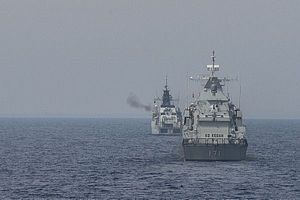Last week, Malaysia’s chief of defense forces confirmed that the Southeast Asian state had taken delivery of the first batch of unmanned aerial vehicles and accompanying equipment from the United States as part of a deal that had been publicly unveiled in the middle of last year. While the development was expected, it nonetheless spotlighted an aspect of defense cooperation between the two countries amid the evolution of the wider bilateral relationship.
As I have been noting in these pages, while the relationship between the United States and Malaysia has had its challenges with the realignment in domestic politics on both sides in the past few years – with the shock political realignment in Malaysia in recent weeks being yet another notable development – some elements of defense ties have nonetheless continued, including in areas such as counterterrorism and maritime security.
Among the expected developments within U.S.-Malaysia defense ties was the delivery of UAVs that was first unveiled last year. As I observed before, the Pentagon had confirmed last May that Malaysia had been set to receive 12 ScanEagle drones from the United States as part of broader assistance to Southeast Asian countries under the Foreign Military Sales (FMS) program that also included Indonesia, the Philippines, and Vietnam.
Last week, we saw further details about the deal following comments by a top Malaysian defense official. Affendi Buang, the chief of the Malaysian Defense Forces, told defense outlet IHS Jane’s that the first of the UAVs had been delivered to Malaysia.
Per Affendi’s comments, the first batch of the UAVs, along with related equipment, was delivered to Malaysia back in late February, when Malaysia was in the midst of undergoing its shifting coalition politics. He added that the remaining six UAVs are expected to be handed over in 2022, with the package in the deal also including training and maintenance and the ability to operate the UAVs for up to 2,000 hours for the duration of the program.
With the first batch of UAVs having been delivered, the focus will shift to how they are being utilized with them initially expected to be operated by the Royal Malaysian Navy’s 601 Squadron. While Affendi provided few specifics on this in his comments, he did mention that the ScanEagles would not be used to conduct surveillance flights as part of the military’s response to the government’s ‘stay-at-home’ order to limit the spread of COVID-19, with commercial drones being deemed more suitable for that purpose.

































